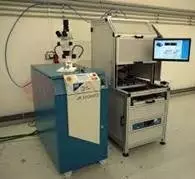Basic Machining Methods: An Overview
Machining is a crucial process in manufacturing and engineering industries that involves the shaping and finishing of materials to achieve specific dimensions, shapes, and surface qualities. This article provides an overview of the fundamental machining methods employed in various industries.
- Turning: Turning is a machining process that involves rotating a workpiece while a single-point cutting tool removes material to create cylindrical parts. It is commonly used to produce shafts, pins, and other rotational components.

- Milling: Milling utilizes rotating multiple cutting tools to remove material from the workpiece. It can achieve a wide range of shapes and features, including flat surfaces, slots, and contours. Milling machines are versatile and can produce both prismatic and irregularly shaped components.
- Drilling: Drilling involves creating holes in a workpiece using a rotating cutting tool called a drill bit. It is a common operation in metalworking, woodworking, and construction industries. Drilling machines can vary from handheld devices to large automated setups.
- Grinding: Grinding is a precision machining process used to achieve fine surface finishes and tight tolerances. It involves the use of abrasives to remove material from the workpiece, resulting in a smooth and polished surface. Grinding is often employed for tool sharpening and the production of high-precision components.
- Broaching: Broaching is a technique that employs a specialized cutting tool with multiple teeth to remove material in a linear motion. It is commonly used to create internal keyways, splines, and other intricate shapes in workpieces.
- Sawing: Sawing is the process of cutting materials using a serrated blade or a wire with abrasive particles. It is employed to separate workpieces into desired lengths or shapes. Bandsaws, circular saws, and hacksaws are typical tools used in sawing operations.
- Electrical Discharge Machining (EDM): EDM is a non-traditional machining method that uses electrical discharges to erode material from the workpiece. It is particularly useful for machining intricate shapes and hard materials. EDM is commonly employed in the production of dies, molds, and aerospace components.
- Laser Cutting: Laser cutting utilizes a high-powered laser beam to melt, burn, or vaporize material, resulting in precise and clean cuts. It is extensively used for cutting various materials, including metal, plastic, wood, and fabric.
- Waterjet Cutting: Waterjet cutting involves using a high-pressure jet of water mixed with abrasive particles to erode material. This method is versatile, as it can cut through a wide range of materials and is particularly suitable for applications where heat damage is a concern.
- Honing: Honing is a machining technique used to improve the surface finish and dimensional accuracy of cylindrical bores. It involves the use of abrasive stones that rotate and oscillate within the workpiece, resulting in a precisely finished bore.





You must be logged in to post a comment.